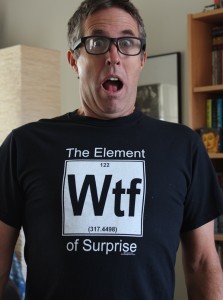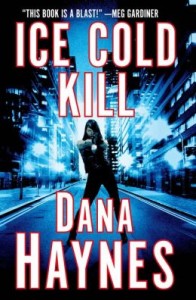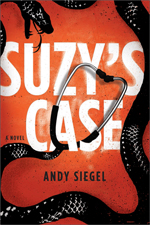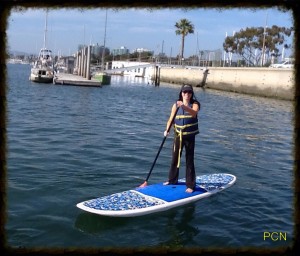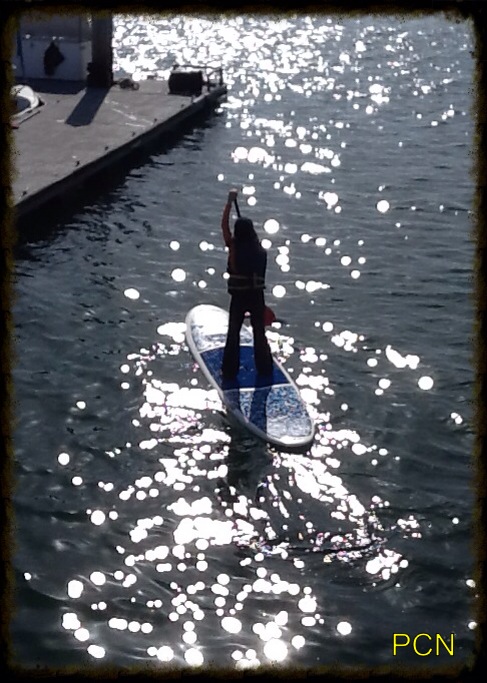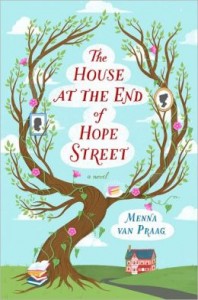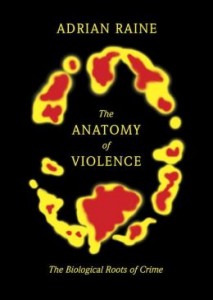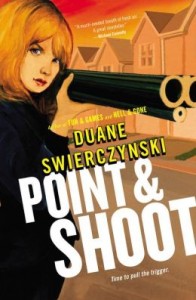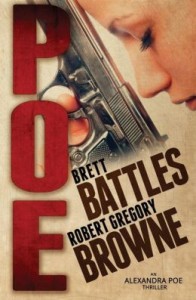 Recently, Brett Battles and Robert Gregory Browne, two popular thriller writers, released their first collaboration, Poe, a first-in-series action adventure about a woman who infiltrates a prison as part of a deal to learn more about her father, who disappeared years earlier and is accused of treason.
Recently, Brett Battles and Robert Gregory Browne, two popular thriller writers, released their first collaboration, Poe, a first-in-series action adventure about a woman who infiltrates a prison as part of a deal to learn more about her father, who disappeared years earlier and is accused of treason.
But she encounters an assassin in prison, someone there to kill the very woman Poe is sent to break out, and Poe may not even survive her mission, much less see her father again.
The authors, who have been friends for years, found a way to write together without killing each other. After they developed an outline based on Rob’s idea, Brett wrote the first draft, Rob did a major rewrite, then Brett did another revision before sending it to the copyeditor (me!), and handling additional revisions after copyedits. The two will swap duties on the next book in the series. (Rob designed cover.)
Their styles fuse well on the page, and they’re funny people, which is why I’m delighted to have them here today to answer some questions, and to let you know that the Kindle version of Poe is FREE today, April 30, until end of Thursday, May 2. Get it now!
Pop Culture Nerd: Alexandra Poe doesn’t come across like she was created by two men. Which one of you is more responsible for her female qualities? Who was girlier?
Robert Gregory Browne: Well, Brett’s definitely girlier, but I think we both tend to think of women as, you know, human beings, and tend to write solid women characters into all of our fiction. I don’t know about Brett, but when I was in high school, most of my friends were girls, and when I worked in day jobs in the past, I tended to hang around with my female coworkers quite a bit, so I’m sure I picked up a lot purely by osmosis.
Brett Battles: Rob’s right. It’s probably me.
PCN: So, was there a conscious decision to write a female protag, or did that arise out of the story you wanted to tell? How would it have been different if Poe were male?
RGB: The character was one I dreamed up several years ago as a movie idea, back when I was screenwriting. I came up with the idea of a woman whose mother had been killed in a terrorist attack and a father who had disappeared and she was hired by an international fugitive retrieval organization to infiltrate a prison in hopes of retrieving information about her missing father, who was wanted by the US government. It was a script I never got around to writing that later evolved into an idea for a novel that I never got around to writing.
There was a time when I considered turning Poe into a male, but I felt the father/daughter connection was more compelling and decided to stay true to the original storyline. When I told Brett about the idea, he thought it was terrific and when we decided to write a book together, it was his suggestion that we take the Alexandra Poe idea and run with it.
BB: My idea to run with it, but Rob’s idea [originally]. As far as writing female protags go, the main women in my solo books are, for the most part, strong, smart, and independent. Transitioning to writing one as a main character was a no-brainer and something I always knew I’d eventually take on.
PCN: Most of this book takes place in a women’s prison. In Ukraine. How did you do research?
RGB: In my original pitch, the prison was in the Middle East, but we both felt that had been done to death. So it was Brett’s idea to put the prison in Ukraine. Since neither of us has ever spent time in a Ukrainian prison (at least I don’t think Brett has, but you never know), the research was largely online. Thank God for the Internet.
BB: I’d rather not talk about my prison years. Did I say prison years? I’ve, um, uh, never been in…look, an airplane!
PCN: I still sleep with a shank under my pillow.
BB: The research was a combination of books and the Internet (travel blogs, videos on YouTube, images, and all sorts of different resources.) I would have liked to have taken a trip there but that wasn’t in the cards this time.
PCN: Why make her a descendant of Edgar Allen? Will that feature more into future stories?
RGB: Poe is not necessarily a descendant of Edgar Allen Poe, although she does live in Baltimore. We haven’t decided if Edgar will be worked into the stories in any way.
PCN: You both agreed to check your egos at the door before you started down this path. In case one of yours did get too big, though, what was the agreed-upon punishment? A punch in the kidney? No Facebook for a month?
RGB: Ha. We actually didn’t really discuss it beyond that, and fortunately it never became an issue. Besides, no Facebook for a month might be doing us a favor…
BB: I’ll just say it involved red-hot irons and potential loss of manhood. That seemed to be enough to keep us in line.
PCN: Yow! What, if anything, did you learn from each other about writing that you hadn’t known before?
RGB: I learned that Brett’s diva behavior is not an act. He’s impossible to be around. Everything is him, him, him.
BB: Diva? Well, I think Mr. Browne (as he insisted I call him throughout the process) is confusing me with him. I’m not the one who demanded a cup of freshly roasted coffee before I even deemed to discuss anything every morning. And don’t get me started on his manicure schedule!
PCN: Oh, man, at first I read that as “pedicure,” and pictured toenail clippings on his desk.
BB: In truth, we’re both pretty familiar with each other’s work, and have acted as one another’s soundboards over the years, so there wasn’t a lot new left to be learned. I guess a small thing would be that we both have certain phrases/words we each use consistently. So there were a few times we had to find a balance. Nothing big, though. It was an amazingly smooth process.
PCN: You both have large groups of loyal readers, and with Poe, you’re potentially picking up each other’s fan base. What would you like fans of the other to know about you and your body of work?
RGB: All I really care about is writing good books and exposing them to as wide an audience as possible. Writing Poe helps each of us expand our audience, but our main concern was to write a good, exciting story. And that’s all readers need to know, I think, about both of us. That we write books that are fun, exciting, and will take them somewhere else for a while.
BB: Exactly. When you pick up one of our books, expect an exciting adventure that’ll keep you on your toes to the very end. Those are the kind of books Rob and I write, because those are the kind of books we both like to read.


